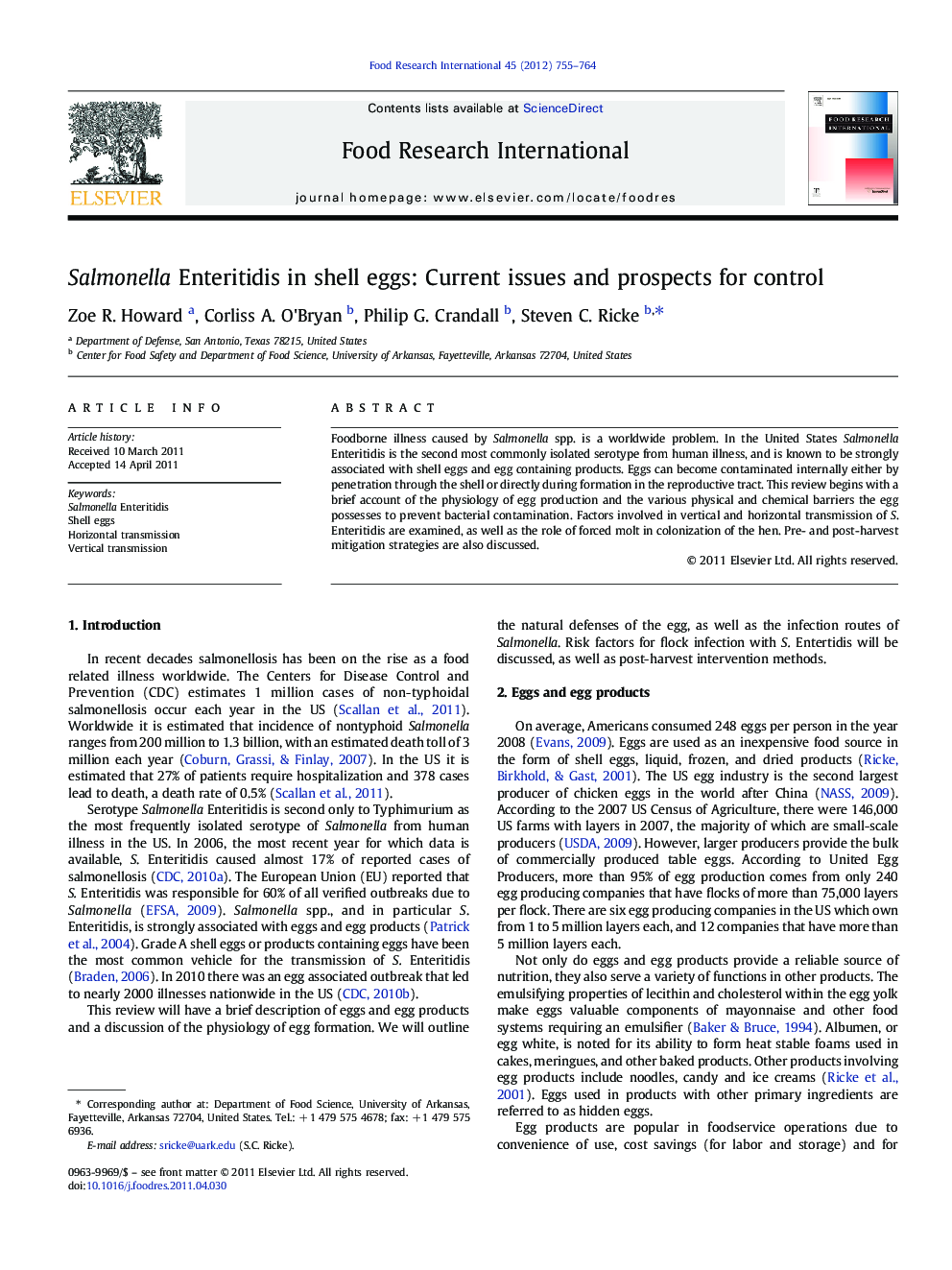| Article ID | Journal | Published Year | Pages | File Type |
|---|---|---|---|---|
| 4561724 | Food Research International | 2012 | 10 Pages |
Foodborne illness caused by Salmonella spp. is a worldwide problem. In the United States Salmonella Enteritidis is the second most commonly isolated serotype from human illness, and is known to be strongly associated with shell eggs and egg containing products. Eggs can become contaminated internally either by penetration through the shell or directly during formation in the reproductive tract. This review begins with a brief account of the physiology of egg production and the various physical and chemical barriers the egg possesses to prevent bacterial contamination. Factors involved in vertical and horizontal transmission of S. Enteritidis are examined, as well as the role of forced molt in colonization of the hen. Pre- and post-harvest mitigation strategies are also discussed.
Research highlights► Salmonella Enteritidis has a strong association with shell eggs. ► Salmonella Enteritidis is transmitted horizontally and vertically. ► Stress increases hens susceptibility to colonization by Salmonella. ► Refrigeration is an important intervention for Salmonella in shell eggs.
